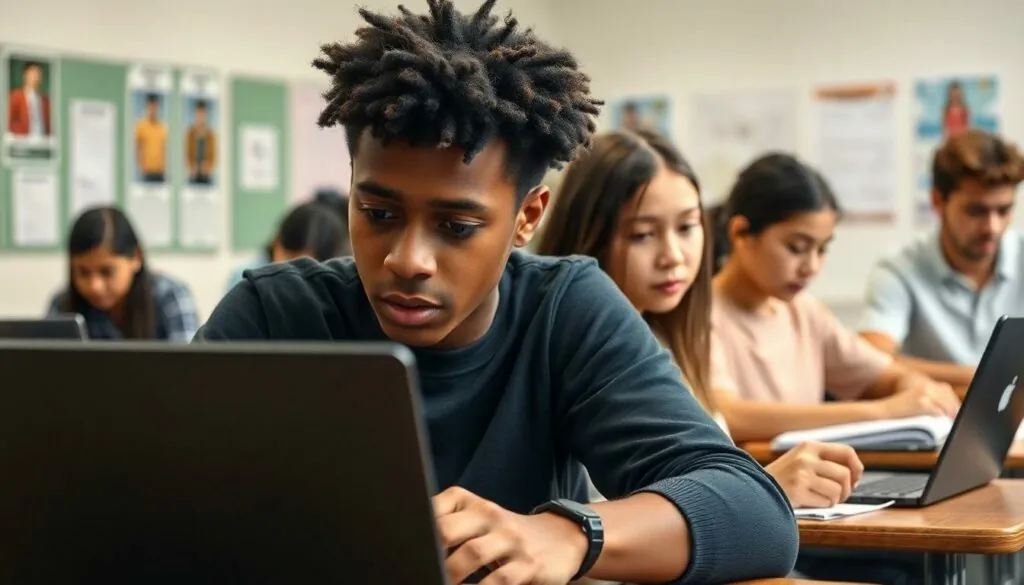In a world where technology reigns supreme, students are constantly searching for shortcuts to ace their assignments. Enter ChatGPT, the AI-powered assistant that can whip up essays faster than a caffeine-fueled all-nighter. But as the digital age unfolds, a burning question lingers: can teachers see if students are using this clever tool?
Table of Contents
ToggleUnderstanding ChatGPT
ChatGPT stands as a prominent AI tool that many students utilize for academic assignments. Its ability to generate human-like text spurs debates on its implications in educational settings.
What Is ChatGPT?
ChatGPT is an advanced language model developed by OpenAI. It employs deep learning techniques to understand and generate text based on input. This model can answer questions, provide explanations, and assist with various writing tasks. Students often turn to ChatGPT for help with essays, reports, and creative writing. The ease of access makes it a popular choice among learners striving for efficiency.
How Does ChatGPT Work?
ChatGPT operates on the principles of natural language processing and machine learning. Initially, it processes user prompts to identify context and intent. Following this, the model generates relevant responses by predicting the next word in a sequence based on vast amounts of training data. Iterative refinements allow it to produce coherent and contextually appropriate text. Its learning capability enhances with user interactions, further solidifying its responses over time.
Teacher Monitoring Techniques

Educators employ various techniques to monitor student activity and detect the use of AI tools like ChatGPT. These methods range from traditional strategies to advanced digital tools.
Traditional Methods
Direct observation plays a critical role in monitoring student progress. In-class assessments provide immediate insights into students’ understanding. Engaging in discussions allows teachers to gauge comprehension and writing style. Additionally, teachers often compare students’ work over time to spot inconsistencies. Noticing a sudden improvement in writing quality might raise flags. Such methods not only help in identifying academic dishonesty but also foster a deeper connection between educators and learners.
Digital Tools Used by Educators
Several digital tools aid educators in monitoring academic integrity. Plagiarism detection software, such as Turnitin or Grammarly, scans submissions for similarities with existing content. Many schools integrate learning management systems that track students’ submissions and modifications. Teachers can analyze patterns in submission timings and revision histories. ChatGPT’s generated responses may lack personal insight, alerting educators to potential AI usage. Utilizing these advanced tools enhances the ability to uphold academic standards while adapting to evolving technology.
Indicators of ChatGPT Usage
Identifying the use of ChatGPT in student work relies on several key indicators. Educators seek specific signs that signal reliance on AI-generated content.
Writing Style Analysis
Teachers observe inconsistencies in writing styles as a major red flag. Sudden improvements in vocabulary, fluency, or structure may raise suspicions. Variability in tone or voice that doesn’t align with a student’s previous work can also indicate AI usage. When students produce responses that lack a personal touch or emotional depth, it suggests assistance from an AI tool. Monitoring the evolution of a student’s writing over time serves as an effective method for discerning typical patterns and potential deviations.
Plagiarism Detection Software
Plagiarism detection software plays a crucial role in monitoring students’ submissions. These tools analyze text for similarities with existing content online or in academic databases. When ChatGPT-generated text is flagged for matches with previously published material, it raises concerns regarding originality. Educators often rely on software to pinpoint suspicious sections in assignments, prompting further investigation. Many institutions employ these digital resources as part of their broader strategy to uphold academic integrity while adapting to technological advancements.
Implications for Students
Students face significant implications when using AI tools like ChatGPT for academic tasks. The use of such technology raises critical ethical considerations and questions surrounding academic integrity.
Ethical Considerations
Ethical concerns arise as students utilize AI to aid their assignments. Students may inadvertently contribute to a culture of dependency on artificial intelligence, compromising their personal growth and learning experiences. Teachers emphasize the importance of original thought; relying heavily on AI can hinder creative development. Respect for intellectual property also plays a crucial role in this conversation. Using AI assistance may blur the lines of authorship, making it challenging to discern who genuinely created the work. As such, students must reflect on the moral ramifications of employing AI in their studies.
Academic Integrity
Maintaining academic integrity becomes increasingly challenging in an AI-driven landscape. Students might face serious consequences if educators identify usage of AI-generated content. Academic institutions prioritize honesty and originality in student submissions. Teachers use various methods to detect AI assistance, raising awareness among students of potential repercussions. Assignments that lack authenticity can undermine the credibility of a student’s educational journey. Therefore, understanding the implications of AI in academia helps students appreciate the value of their own work, fostering a culture of integrity and trust in educational environments.
The evolving role of AI tools like ChatGPT in education raises important questions about academic integrity and originality. As students increasingly turn to these technologies for assistance, educators are adapting their methods to ensure that learning remains authentic. By employing various detection techniques and fostering open communication, teachers can better understand their students’ work and intentions.
Ultimately, it’s crucial for students to navigate this landscape thoughtfully. Embracing technology should enhance their learning experience rather than replace their critical thinking and creativity. Understanding the ethical implications of using AI can help students maintain their academic integrity while benefiting from the advantages that these tools offer.





